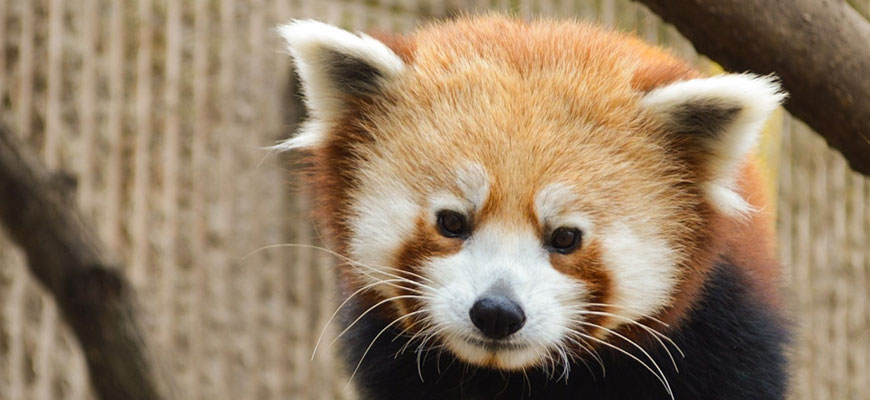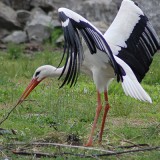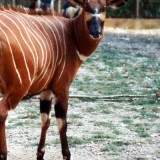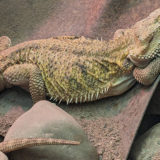RANGE
Native to the eastern Himalayas (Bhutan and Nepal) and southwestern China.
HABITAT
Prefer high-altitude, temperate forests. Dense forests of bamboo and small trees.
SIZE
31 to 44 inches in length (head to tail). Male red pandas on average weigh 10 to 14 lbs. and female red pandas, which are smaller, weigh an average of 6 to 10 lbs.
REPRODUCTION
Mating between red pandas typically occurs from January to April with a gestation period around 131 days. During mating season, red pandas will engage in more interactive behaviors including feeding near each other. Females will select dens in logs, trees, stumps or rock crevices to create their nest. Once born, the litter of 1 to 4 cubs, will be fully dependent on their mother for 3 to 4 months. Cubs are born blind and will be considered fully grown around 1 to 2 years.
DIET
Wild: Bamboo, roots, grasses, fruits, insects and grubs
Zoo: Pelleted diet, bamboo, vegetables and fruits.
BEHAVIOR
Red pandas are considered crepuscular (active at dawn and dusk), sleeping up to 17 hours a day. They are avid climbers due to the habitat they are found in and often sleep in trees during the daytime. Adult pandas are solitary with the exception of mating, where a pair of red pandas will come together to feed and rest. They are also territorial and use scent marking to mark the bounds of their home. Males are known to make various sounds during mating season including bleating, barking, hooting and grunts.
POINTS OF INTEREST
- Although the name suggests that red pandas may be related to giant pandas, recent DNA studies have placed them in their own family – Ailuridae.
- Red pandas have many adaptations to help them in their natural habitat including a specialized wrist bone that acts as a false thumb or extra digit to help climb, grip, manoeuvre and eat in the Himilayas. Being able to climb well allows the red panda to escape predators, sunbathe and find shelter.
- Other adaptations include the Flehmen response that allows them to taste air through their mouth when their nostrils are closed; this helps locate other red pandas in their territory.
- Their diet consists of 98% bamboo, but red pandas are actually classified as carnivores due to their digestive systems and teeth.
STATUS
Endangered due to habitat destruction, disturbances and territory fragmentation by increased human population.







